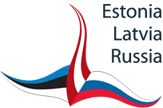Piracy on the Waterways of the Pskov-Peipsi Lake
In the middle ages, pirate attacks on ships were quite common. Facts pointing to piracy in the Pskov-Peipsi region can be found almost solely in German documents (Russian sources withhold such facts). The damage done to German merchants by such plunders is stipulated in silver marks, as a rule. But there is some information on the commodities (in thousand pieces), wax and textiles taken from the German merchants.
A number of reports do not indicate the place of plunder. Thus, the list of claims of 1335 speaks of frequent captures of Teutonic sailboats by Pskovites, damaging them; in one instance, Pskovites withheld 400 rubulas (rubles) as tax, i.e. we have a case of racket framed up as a legal effort; apart from that, Pskovites murdered two German merchants and took their property. All this happened between 1288 and 1335.
The second group of reports tells of robberies of German merchants on their way from Pskov to Novgorod – in particular on the Rivers Cheryokha and Shelon’. The documents use names Use and Saac, which in comments are referred to as Gewasser in Pskowschen – or waterways in the PskovLand. These toponyms may be connected to the River Uza (a tributary to the Shelon’) and the River Petenka (a tributary to the Cheryokha). Besides, another argument in favor of this waterway to be the spot of the robberies is the list of persons participating in them, which includes toponyms localized with certainty to the interfluve area of the Shelon’ and Cheryokha.
In 1292 (or in 1297, according to other lists) 15 German merchants were robbed in the waters of Uza, with 8 ulnas of proper green textile, 1 frustum of Bremen linen, many a fur, wax and 956 marks of silver plundered. The list stipulates individual damage shares of every merchant. Yet these enormous figures should be treated with great caution. As M. Berezhkov wrote: “Unfortunately, we are deprived of the opportunity to decide on the share of truth in the document; indeed, the Germans do point out exactly the place and time of the violence they suffered, and almost every time they name the victims; yet, we cannot vouch for the sum of damages to be shown everywhere correctly…” And another comment: the damages voiced in marks of silver do not necessarily mean the merchants were robbed of money. A.L. Khoroshkevich, basing on the vast material regarding precious metals imported to Russ she had collected, came to the conclusion that “it was namely silver in late 13th-early 14th centuries in its value comprised the main bulk of all imported commodities”. This is to say silver, with German merchants, was a commodity – just like textiles, furs or wax.
That same year, in the waters of Saac (in aqua dicta Saac) Pskovites robbed 8 German merchants of the sum of over 960 marks. In this case, the damage is shown in silver marks only, but accurate to half marks.
In 1300, on the way between Novgorod and Pskov – in the country and on water – German merchants were robbed, and some of them murdered. 10 persons were victims of this crime. The damage comprised over 2000 silver marks. The names of the merchants robbed – Iohannes Albus de Lubeke, Adam de Gotlandia and Hinriks Holste de Riga – are listed in the settlement writ between Novgorod, Lubeck, Gotlandia and Riga of 1301. According to the writ, Prince of Novgorod Andrei Yaroslavich committed to provide guards to merchants of Hansa, using the way of rivers.
There is only one Russian document that can be linked to the robberies of German merchants in the waterway between Pskov and Novgorod. It is Pskov birch-bark script No. 7. It was found in 1988, in dig 13 on Lenin Street. Generally, script No. 7 translates as follows: “Greetings from Stepan to Vatsuta. What you took of that textile, (in that) I rely on God and on you. Load it on to the sailboat fast. Also, declare (or consider) it your textile. As regards payment (for it, i.e. commission), we both know (or we both will settle) how much”. I.O. Kolosova suggested script No. 7 may speak of a hurried and secret export of fabrics taken from foreign merchants. Thus, Stepan – the author of script No. 7 – might have been a participant of one of such robberies. Vatsuta might have been beyond suspicion, and that is why he was the one to export the textiles captured and, possibly, sell them.
The third group of reports is connected to the robberies of Hansa merchants in Sacco (Saccum). In 1298 in that region, German merchants were robbed by Pskovites and Lithuanians (Letwinis) in violation of the agreement between the Order, Novgorod and Pskov. Pskovites were ruled to return all goods captured. Yet Lithuanians did, but Pskovites did not. The total sum of the loot comprised 2500 silver marks. This event is also mentioned in the claims of 1335. Less than a week following this robbery, Pskovites robbed two sailboats in the same spot.
In the period from 1298 to 1335, Pskovites captured 65 Teutonic sailboats going to Saccum. The document specifies circumstances: the sailboats were heavily loaded, so the speed was rather low, which resulted in their capture.
In the period from 1288 to 1335, the sum of the property plundered from Hansa merchants totaled to 6630 silver marks, and 15 merchants were damaged. The situation in the most used of the waterways of the PskovLand in late 13th-early 14th centuries comes along a common trend. The same scale of piracy could be observed in the Neva-Volkhov waterway in that era.


